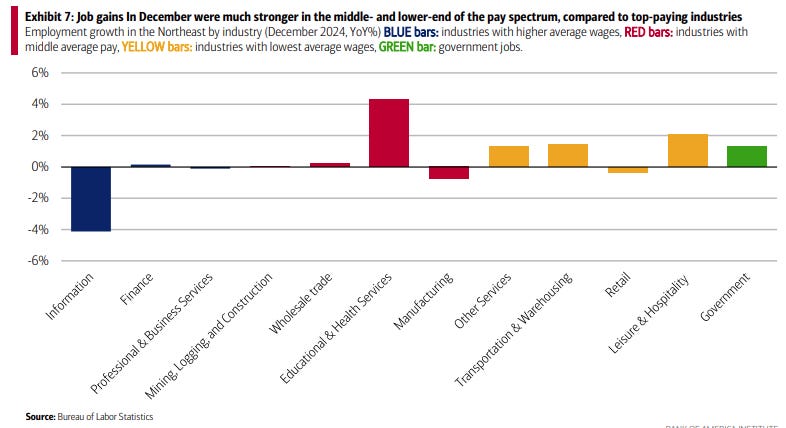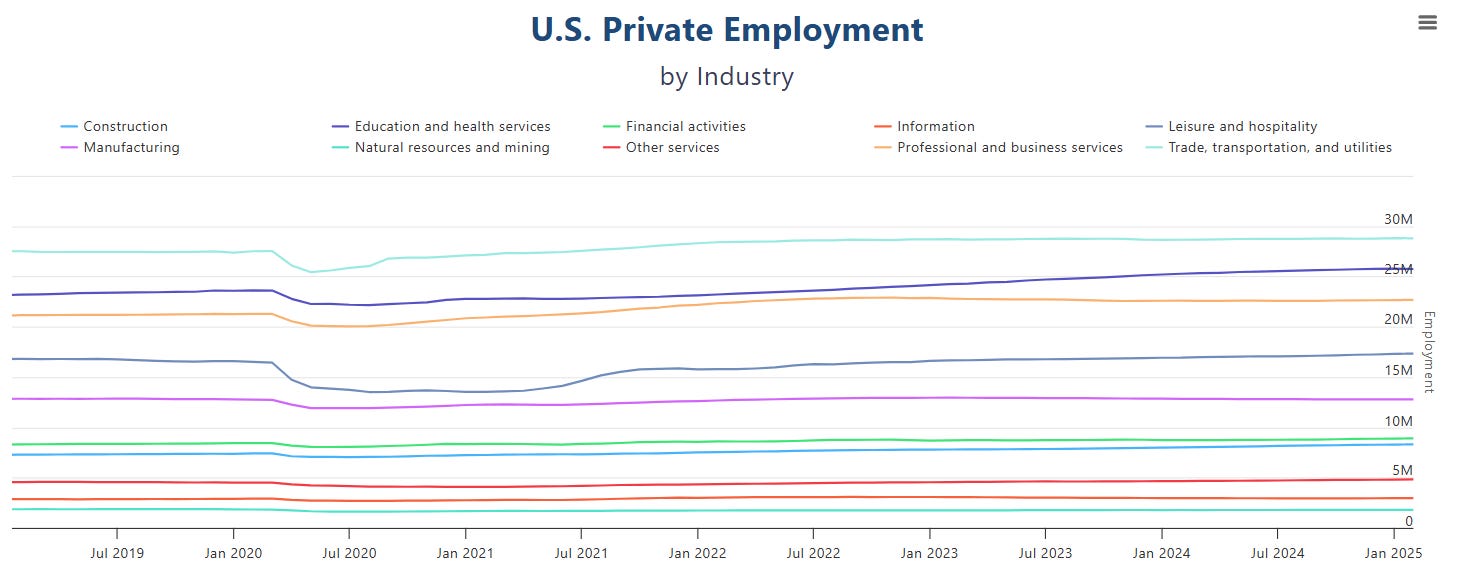Slower job growth has nothing to do with "policy uncertainty"
And that's unfortunate, because the alternative is much worse
ADP blames soft jobs on “uncertainty,” but the data mostly says otherwise
slow hiring is the trend, not a sudden turn—look at the trends yourself!
there’s really only one “uncertainty” signal, but the rest is just headwinds, same as they ever were
if uncertainty were the problem, that’d be nice, because then there’d be an easy fix
there’s good stuff to root for though, and other reasons for cautious optimism
👉👉👉Reminder to sign up for the Weekly Recap only, if daily emails is too much. Find me on twitter, for more fun. First, sign up for your free trial of AlphaSense, because why wouldn’t you?
A plug for our sponsor, AlphaSense
AlphaSense is actually an amazing one-stop-shop for:
expert calls (especially since it acquired Tegus),
company-filings, and
analyst research;
plus, it’s got a pretty neat generative AI-search tool that I’ve been playing with a lot (which makes searching across the corpus of information much easier than before).
It’s a genuinely fun and very useful platform, and as part of the sponsorship, Random Walk readers have ACCESS TO A FREE TRIAL, which you’d be a fool not to try (just by clicking through the link below):
FREE TRIAL! FREE TRIAL! FREE TRIAL!Give it a shot. It’s a great platform.
Soft jobs probably has nothing to do with “policy uncertainty” (and that’s too bad)
You might have heard that job growth was weaker than expected.
The headline, for many, comes straight from ADP’s chief economist:
Soft hiring (and soft spending) all “might” be attributable to “policy uncertainty,” aka the Mad King.
The implication, of course, is if there were more certainty, then we’d be back to all cylinders firing.
But that’s mostly nonsense. Look, I have little doubt that “will he / won’t he” of tariffs is causing some serious headaches for firms—headaches that may even impact hiring decisions at the margins. Certainty is a pretty important condition for longer-term planning, no doubt.
But it’s also abundantly clear that the slowdown in hiring, the lack of labor market breadth, and the softness in hiring intentions is not a recent thing. “Where does job growth come from?” has been an urgent question for well-over year, for anyone willing to notice that a “tight” labor market (playing catchup) is not necessarily a “strong” one.
Tough market for new- and re-entrants? Yeah, that’s not a new trend either.
White Collar Stagnation, and the fact that job-growth has been concentrated in the lower- and middle-income professions? Also, old news. Take the Northeast specifically, which has been taken a slow-and-steady approach (in contrast to the burning highs and lows of the Sunbelt):
December job gains all spiked in the usual low- and mid-paying categories . . . while the higher paying stuff (in Blue) was flat or negative.1
Must be the “policy uncertainty” causing the Information workers to lose their jobs.
No. That hiring would continue to soften is far more likely to be downstream of whatever’s been causing it to soften for the last couple of years, rather than some new “policy uncertainty.” The fact is that the economy is structurally weak (and deficit-driven growth, ain’t growth). Anyone who says “Trump inherited a strong economy” just isn’t being straight with you.
Again, uncertainty is probably not helping, and may very well be hurting, but don’t let it distract you from the longer-term trend.
Slow hiring growth is the trend, not a sudden turn
Don’t take my word for it though. Look at the longer-term trend.
Take the longer series of total payroll count, and apply the eyeball test. What does it say?
Payroll growth has been pretty flat for the most part, for a while now.
Other than “education and health services,” and a little bit of “leisure and hospitality,” it’s not really the most inspiring growth story.
Of course, we already knew that Healthcare Makes All the Jobs, so this is no surprise.
Indexed to Jan. 2020, payroll growth looks like this:
Keep reading with a 7-day free trial
Subscribe to Random Walk to keep reading this post and get 7 days of free access to the full post archives.






